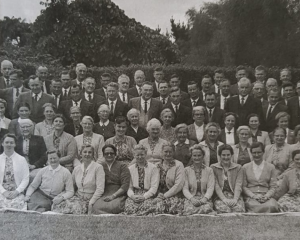A landmark partnership between Japan and New Zealand scientists will help better understand the threat that tsunamis pose to our country, along with the unique features of our seafloors.
The new five-year agreement signed this week between GNS Science and the Japan Agency for Marine-Earth Science and Technology (JAMSTEC) will pool the resources of the two organisations to probe processes in offshore subduction zones, and the associated earthquake and tsunami hazards that come with them.
For New Zealand, it means borrowing the scientific firepower of one of the world's leading marine research organisations - JAMSTEC has nearly 1100 staff, 10 ocean-going ships, the manned submersible Shinkai 6500, and several remotely operated vehicles and autonomous underwater vehicles (AUVs).
It will bring an increased focus on the Hikurangi subduction zone east of the North Island and the 2000km-long chain of under-sea volcanoes along the Kermadec Arc, northeast of Bay of Plenty.
Subduction zones, such as the one east of Gisborne, are responsible for generating the world's largest earthquakes, which are sometimes called megathrust quakes.
Devastating examples were the 9.1 Sumatran quake (Boxing Day tsunami) in 2004 and the 9.0 Tohoku quake in Japan in 2011, and seismologists believe the Hikurangi subduction zone is capable of a 9.0 megathrust quake.
Japan, which is the only country to have a warning system for tsunamis caused by nearby earthquakes, is regarded as a world leader in the processes that trigger tsunamis.
The new partnership will also look at joint projects aimed at understanding ocean processes in the Pacific and Southern oceans, with an emphasis on climate history to help refine future climate change projections.
The two groups have collaborated on and off over the past 20 years, but the partnership will mean more frequent exchanges of equipment and personnel, plus longer-term and more ambitious joint projects.
"Our two organisations share a similar vision of discovery and this agreement heralds a new era by helping us explore beneath the oceans surrounding New Zealand," GNS Science chief executive Dr Mike McWilliams said.
"Only a small fraction of New Zealand's 5.7 million square kilometres of seafloor has been explored and mapped in detail.
"Our relationship with JAMSTEC will see a step-change in the amount and quality of marine research we undertake."
One of the projects, still in the early planning stages, would involve 100 Ocean Bottom Seismometers being deployed off Poverty Bay to investigate plate tectonics and earthquake processes under the seafloor.
This would be one of the world's biggest ever deployments of ocean-bottom instruments for investigating subduction plate boundaries.
There are also proposals to study seafloor hydrothermal systems along the Kermadec Arc to better understand the formation of copper and gold-rich mineral deposits found on some of the under-sea volcanoes, and the ecosystems associated with the hot springs.
This would involve multiple dives by an ROV or manned submersible to directly sample the hot springs, mineral-rich "black smoker" chimneys, and marine life around the seafloor vents.
There should be a clearer picture on the likelihood of these expeditions by early next year.
By Jamie Morton of the New Zealand Herald












